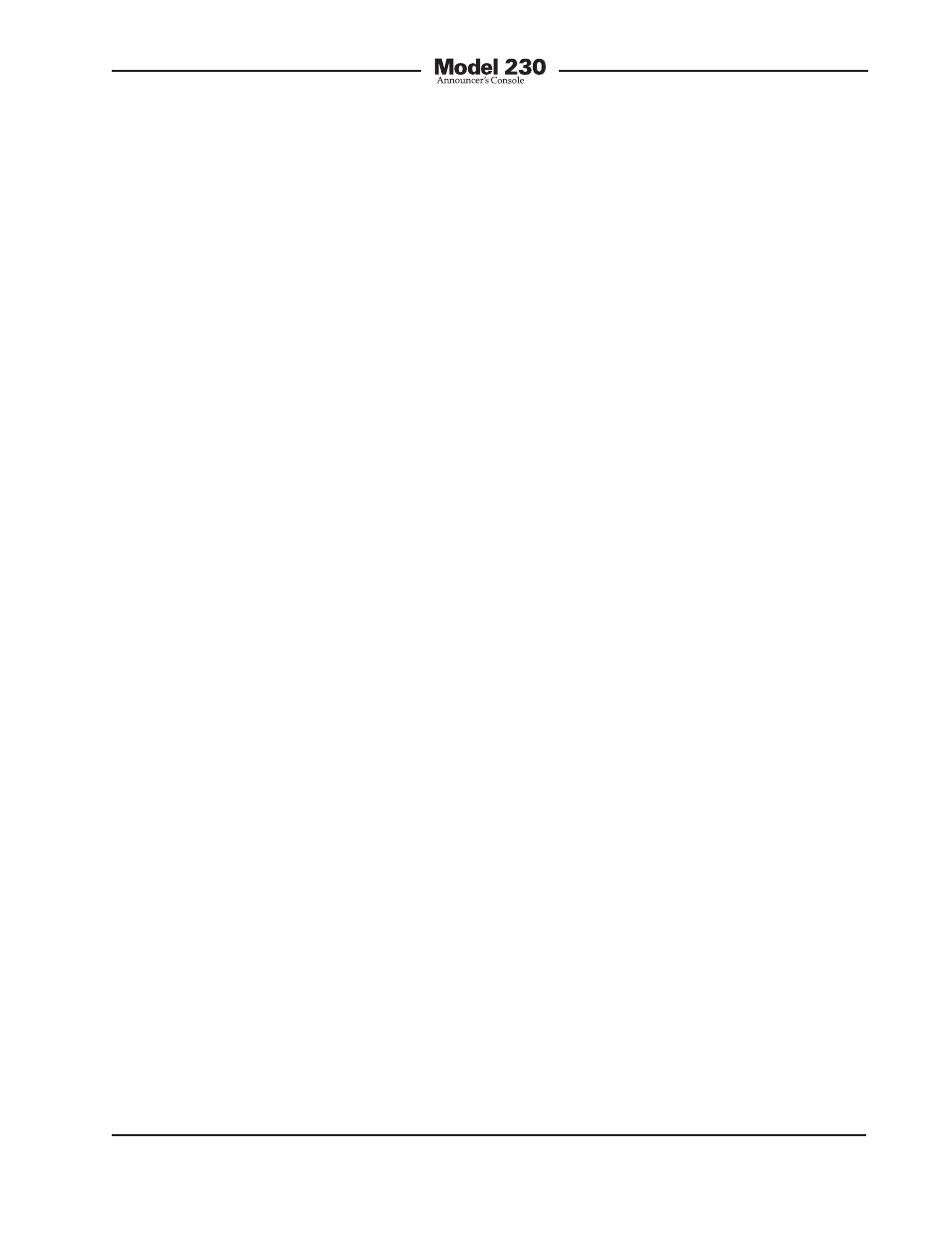Intercom audio levels – Studio Technologies 230 2008 User Manual
Page 39

Model 230 User Guide
Issue 7, October 2008
Studio Technologies, Inc.
Page 39
miss” proposition. During field testing of
prototype announcer’s consoles, Studio
Technologies’ personnel found that a
wide range of nominal audio levels were
present on “real-world” IFB circuits. Many
were fine, being reasonably close to the
desired –10 dBu. But some were much too
low, while others were much too “hot.” We
observed one unfortunate baseball “color”
commentator being sent interrupt audio
signals so “hot” relative to program audio
as to almost make his ears bleed! This
situation should not have been allowed
to happen.
In defense of field technical personnel,
measuring the audio level of an IFB circuit
hasn’t traditionally been an easy proposi-
tion. But that situation has now changed.
After experiencing this condition in the
“field,” Studio Technologies’ engineers
were motivated to design the Model 72
Level Meter/Interface. This compact de-
vice plugs directly into an IFB circuit and
provides two useful functions: level meters
and “dry” audio outputs. Two 5-segment
LED meters allow direct observation of
the audio signal levels present on the IFB
circuit. The display range is optimized for
the signal levels found on typical “wet”
IFB circuits, rather than traditional “VU”
scaling.
The Model 72 also provides two transform-
er- coupled “dry” audio outputs, one for
each IFB channel. These outputs are use-
ful for a variety of production and testing
applications. For example, the outputs can
serve as the interface between a traditional
“wet” IFB system and a wireless in-ear
monitor system. The outputs can also be
connected to a monitor panel, allowing
visual and aural monitoring of the IFB
audio signals.
In conclusion, we’re sorry for this shame-
less promotion of the Model 72 Level
Meter/Interface! But necessity was defi-
nitely the “mother” when it came to the
unit’s invention. Working “in the field” with-
out such a device, we felt “blind” when
connecting to IFB circuits. That no longer
has to be the case and we think that you’ll
find owning one a very worthwhile invest-
ment. For further information please refer
to the Studio Technologies website.
Intercom Audio Levels
The Model 230 was designed to function
well with intercom lines associated with
standard broadcast and production “party
line” intercom systems. These systems
provide DC power and one or two chan-
nels of audio over standard 3-conductor
cables that terminate with 3-pin XLR-type
connectors. Establishing the correct
“listen” and “talk” levels was critical in
achieving good audio performance. In
North America the two most common
intercom systems are those from RTS
and Clear-Com. From tests performed
in Studio Technologies’ lab, the nominal
RTS TW-series audio level is approximate-
ly –10 dBu. The dynamic range control
provided by belt-packs such as the BP325
was very good, limiting the maximum
level to at most 10 dB above the nominal.
The nominal audio level associated with
a Clear-Com system was harder to char-
acterize. It appeared to be a few dB less
than –10 dBu, but the dynamic range was
much larger. Level peaks of 10 to 20 dB
over nominal were easy to produce.
This objective data led to the following
Model 230 design decisions. When audio
from intercom channels 1 and 2 was used
as headphone cue sources level sensitiv-
ity selection switches or trim pots were not
required. The level-range available on the
